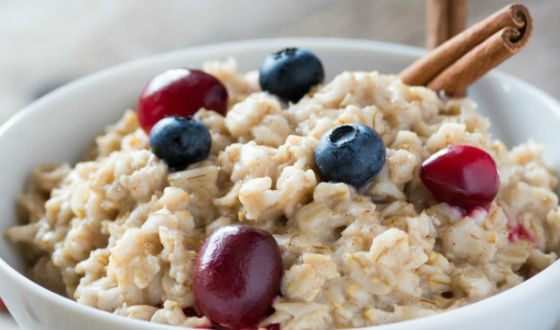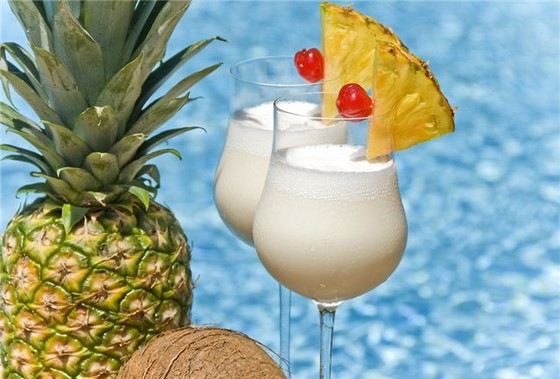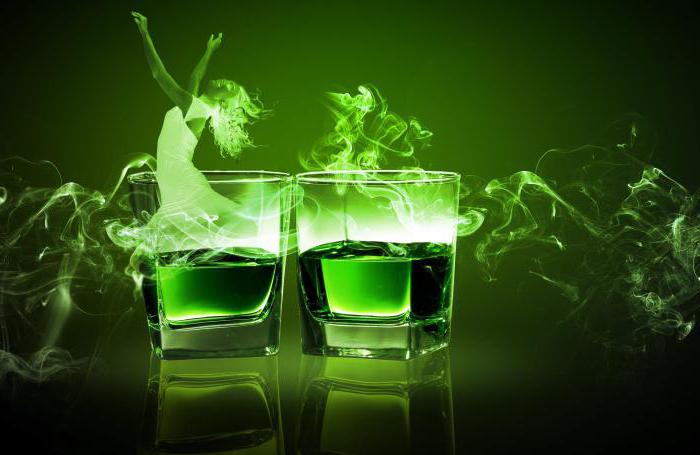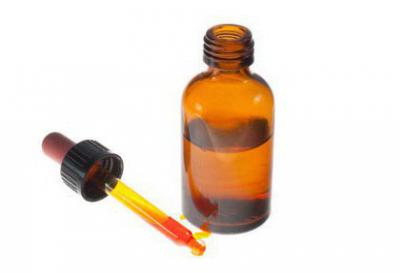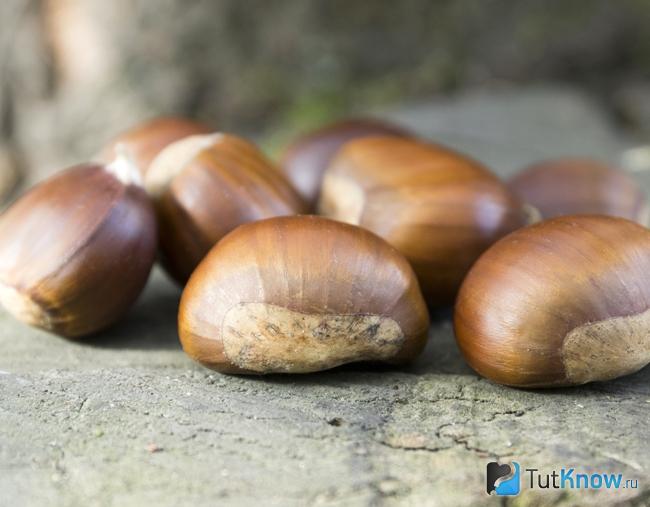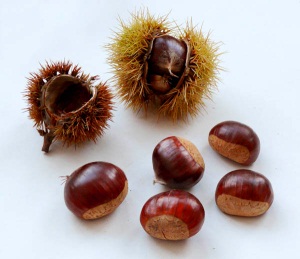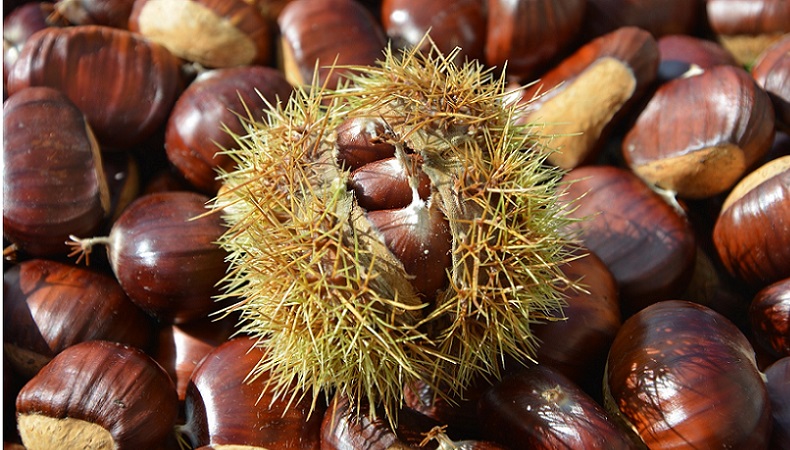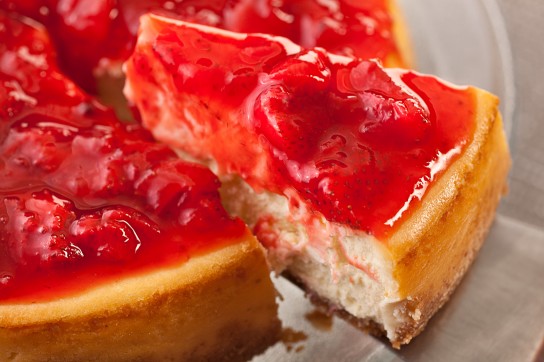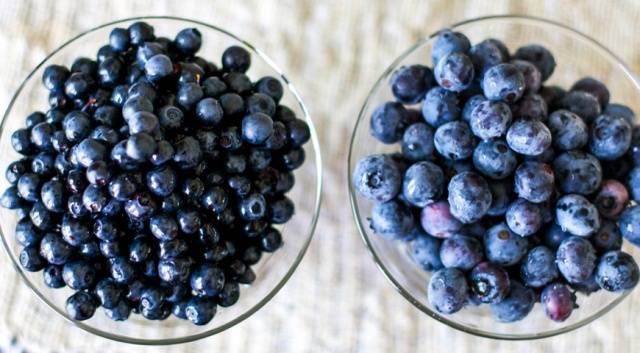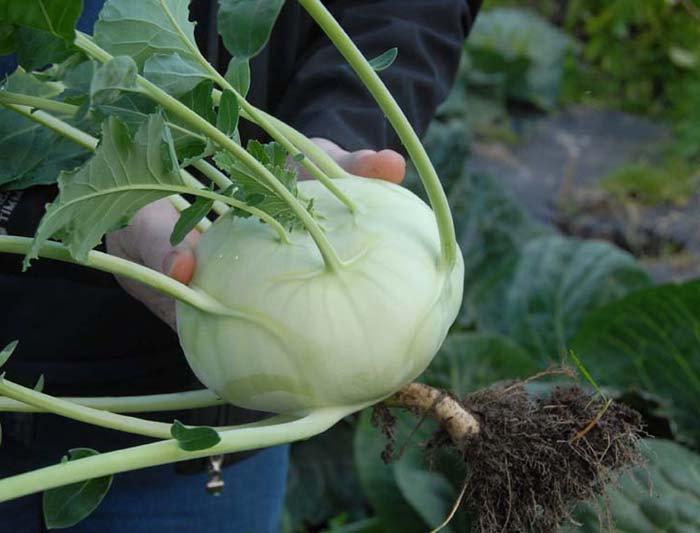Where people drink more. Statistics and rating of alcoholism in the world
Many of our compatriots have one stable stereotype regarding the size of consumption of Russian strong drinks by Russians. One cannot surprise anyone with a caricature, where a Russian peasant of a specific appearance holds in his hands a bottle of "fiery water." But according to a completely neutral World Health Organization, Russia did not even get into the "honorable" top three in terms of the amount of alcohol consumed by its inhabitants. And the first places went to such countries, which few expected to see among the "laureates." So which country can be considered the most drinking in the world?
Historically, each country has its own culture of drinking alcohol, which prefers different options for strength. To unify the rating, WHO had to take into account not the natural volume of a wide variety of strong drinks that are preferred in a particular country, but in terms of pure ethyl alcohol, which they actually contain. To increase the representativeness of the calculations, even people whose age had barely reached 15 years old were added to the statistics.
1st place - Moldova (18.22 L)

You should not be particularly surprised that this small country has taken the lead in the ranking of the most drinking countries in the world - in the end, grapes are its main agricultural crop. The population of Moldova, amounting to about 3.5 million people, on average "takes on the chest" 18.22 liters of alcohol per year per person. At the same time, only a smaller part (about 8 liters) is used officially, that is, it is bought in stores that have a state license. But even more Moldovans drink products manufactured in clandestine workshops. In Moldova, from strong drinks it should be noted an analogue of cognac, tsuyku - tincture on pear, apricot or plum and, of course, excellent grape wine. At the same time, cognac is made only at official factories, but wine and tinctures are produced both officially and illegally.
2nd place - Czech Republic (16.45 L)

The Czech Republic was a little behind Moldova, where everyone drinks “only” 16.45 liters of alcohol per year. Czech beer is world famous and has a rich history. The most famous brands are Velkopopovitsky Goat, Pilzner, Radegast. Beer here in the XII century began to produce Celts. This drink was so enjoyed by the local Slavs that a few years later it was already brewed in almost every house. But the Czech Republic does not forget about winemaking, which has become the most promising in local agriculture. Most grapes are grown in Moravia, so Czech wines are often called "Moravian". In the capital of the country - Prague, in its many bars you can try most varieties of Czech wine and beer.
3rd place - Hungary (16.27 L)

An honorable third place, having lost just a bit to the Czechs, is occupied by alcohol lovers from Hungary, in which there are many excellent vineyards. In this country, two alcoholic beverages became the most famous. One of them is the famous Tokai dessert white wine, grapes for which grow in Tokai-Hedaglia vineyards. The other is a herbal liquor produced over two centuries, the secret of the recipe of which is passed down by the local families from generation to generation - it is only known that it contains about 40 herbs and that it is aged in oak barrels.
4th place - Russia (15.76 L)

But the first below the line of winners was Russia. Unfortunately, Russians do not drink wines too much, but they fill up their lack with beer and vodka. Although, according to researchers, the percentage of the population, prone to drink wine, is gradually growing.
5th place - Ukraine (15.6 L)

It is easy to predict that Ukraine will be on this list next to Russia. In Little Russia, back in the 17th century, the main strong drink was “vodka” - local moonshine. True, in those days it was more often called "hot vodka." In today's Ukraine, the production of high-quality Nemiroff vodka that meets international standards has also been launched. The most famous of this line is Ukrainian Honey with Pepper. Ukrainian vodka Khortytsa is no less famous all over the world.
6th place - Estonia (15.57 L)

In sixth place in the list of the most drinking countries was another fragment of the former USSR - Estonia. But at the same time, Tallinn has always been considered one of the most cultured and calm European cities. Probably because Estonians prefer ale or beer over strong drinks.
7th place - Andorra (15.48 L)

Lost in the Pyrenees and squeezed on both sides by Spain and France, the dwarf state of Andorra prefers wine, especially since it has as many as four family wineries. In addition to wine, Andorrans drink 4 types of beer, including roasted malt and wheat.
8th place - Romania (15.3 L)

This medium-sized European country, with about 21 million people, is only in the 50th place in terms of the human development index, but in terms of alcohol consumption it is much higher - in eighth. Moreover, in Romania, with approximately equal zeal, residents drink strong alcoholic drinks and beer. Although the Balkans are an ancient wine-growing region, the Romanians prefer the strongest (40-60 degrees) “brandy”. This drink can have a different origin: “plum brandy” is made from plums, “smokinov” is made from figs, “kaisieva” is made from apricots, and “muscatov” is made from grapes. At the same time, brandy is drunk not only chilled, but also heated, while adding orange peels, cinnamon and cloves.
9th place - Slovenia (15.19 l)

Not far from Romania on the map and in the neighborhood in our ranking is Slovenia, drinking almost as much. But Slovenes love beer most of all, and wine is in the background here, and this is despite the fact that the oldest vineyards in Europe, Stara Trta, which are more than 400 years old, are located near Maribor.
10th place - Belarus (15.13 L)

Belarus closes the top ten most drinking countries in the world and is ready to push Slovenia from 9th place. At the same time, the data on moonshining remained inaccessible for researchers, therefore, it is obvious that the real consumption of alcohol in this country is much higher than the official results give. After all, it is known that Belarusians love to make Vilnius home-made beer, and sbiten, and a variety of tinctures: currant, cranberry, mint, and aronia. There is also a drink with the strange name “krambambula” - mead with spices, used in hot and chilled form.
11th place - Croatia (15.11 l)

This is followed by Croatia, whose inhabitants overcome a little more than 15 liters of alcohol per person per year. The country is famous for its winemaking, producing about 700 brands of wine. They also make traditional Balkan brandy (from grapes, plums, figs and other fruits, as well as herbs). Especially famous are the cherry marasca and the bitter herbal pelinkovac, which is made in the central regions of the country.
12th place - Latvia (15.03 L)

Most of all in Latvia is known the “Riga Black Balsam”, which has been produced since 1755, but it was not he who allowed this Baltic country to take 12th place. After all, many high-quality liquors and vodkas are produced here, for example, caraway vodka, tomato vodka and a variety of herbal tinctures. In general, in Latvia they have long been able to brew beer, and today the Latvian foamy drink has an excellent reputation.
13th place - Republic of Korea (14.8 L)

The combination of cheap alcohol and the Koreans' cravings for the “green serpent” put this country on the 13th line of the rating. Both throughout East Asia and Korea, in particular, the most important agricultural crop is rice, which is why traditional alcoholic drinks are made here on its basis. In addition to rice, fruit, herbs, flowers and more exotic ingredients are used to add a certain flavor to the drink, which is much stronger than, for example, in Chinese wines. Koreans have 6 main alcohol-containing drinks: distilled liquor (including soja), yakcha, takcha, floral, fruit and medicinal wines.
14th place - Portugal (14.55 L)

The next participant in the ranking is Portugal. Thanks to the suitable climate, fine grapes grow in the sunny Pyrenees. Therefore, the Portuguese most (55%) drink wine, and only then comes the beer, although it costs a lot less. Port and Madeira are Portugal specialties.
15th place - Ireland (14.41 l)

The Irish reached the 15th place thanks to the consumption of the world's most famous dark beer, Guinness, which they themselves brew. It also produces some varieties of whiskey. However, alcohol is very expensive here.
According to the World Health Organization, Russia is only 24th in Europe in terms of alcohol consumption per capita. In 2017, the average Russians consumed only 8.1 liters of pure alcohol per year, being behind Austrians, French, Germans and British, not to mention the leaders of anti-rating - Estonians, Lithuanians and Czechs.
The positive dynamics over the past few years is also noteworthy. If we compare the WHO testimony for 2015-2017 with the data of six years ago, it turns out that the Russians began to drink a quarter less. In addition to Russia, only 15 countries from the top 25 most drinking countries in Europe can boast of reduced alcohol consumption.
Thus, Russians do not drink as much as is commonly believed in Russophobic myths: in the top 25 of the WHO ranking, Russia takes the last but one place (see table below). And the downward trend in alcohol consumed in our country is strengthening.

Federal News Agency asked experts and politicians to evaluate the list of countries in the Old World on alcohol consumption per capita and measures taken in Russia to reduce alcohol abuse of citizens.
Do not slander yourself
As noted by a narcologist, head of a branch of the Moscow Scientific and Practical Center for Addiction Sergey Polyatykin, the opinion that Russia is the most drinking country in the world is often reinforced, alas, by the Russians themselves.
“For some reason, we always love to strip ulcers,” the doctor points out. “But you must, on the contrary, show your best side!”
In fact, historically, drunkenness came to Russia quite late, the expert notes.
“The Russian peasant was one of the most sober in the world. We didn’t grow grapes, and there wasn’t much to make moonshine, ”says Polyatykin.

According to the doctor, drunkenness in Russia was associated with the development of capitalist relations.
“The drunken proletarian was beneficial to the capitalists: he is less inclined to economic and political actions,” Polyatykin explained.
A special image of the alcoholic was created in the culture, the interlocutor of the FAN points out.
“In literature, this is Moscow-Petushki.” Venedikta Erofeeva. It is interesting to read, but this is not an achievement of Russian literature, but the depth of its failure. In the cinema, these are funny films about alcoholics: here is “Dog Watchdog and Extraordinary Cross”, “Gentlemen of Fortune”, and Dr. Lukashin, who flew away drunk to Leningrad, ”the narcologist lists.
A drunkard in popular culture is always cheerful, kind, charming, funny stories happen to him, and he does not suffer any harm from drinking, adds Polyatykin.

Ministry of Health warns!
However, despite the image of a “good” drunkard created in Russia, at present our country is on the right track in solving the problem of alcohol.
« Vladimir Putin, while still being the head of government, he signed the anti-alcohol concept, which is currently operating in our country, ”the doctor recalls. - All measures are spelled out there quite clearly. Fighters for sobriety, and this is, first of all, the Ministry of Health of the Russian Federation, firmly uphold Putin's concept, despite the powerful alcohol lobby. ”
According to the doctor, it is still necessary to introduce an age requirement for alcohol consumption from the age of 21. In addition, it is necessary to ensure that Russian citizens spend money on education, sports and tourism, and not on alcohol.
“For the past ten years, we have been observing a drop in the number of new cases of alcoholism,” the doctor shares data on the Russian Federation. - There is a very good indicator of this: there is a serious decrease in the number of alcoholic psychoses. We expect alcohol consumption in Russia to fall. But more and more efforts must be made for this. ”

Drinking culture
In turn, the representative of the State Duma Committee on Health Protection Alexey Kurinniy draws attention to the fact that WHO figures may not be true.
“A huge amount of illegal alcohol in Russia today is simply not taken into account,” the deputy states. - I'm not talking about the various tinctures, solutions and the like fluids that our citizens also consume. I think if all this is put together, our place will be higher to the top. "
In addition, there are differences in the culture of alcohol consumption and addiction to certain types of drinks that are drunk in different countries.
“The large volumes of alcohol per capita in Germany are due to the consumption of mainly low-alcohol drinks, such as beer,” says the deputy. - The same applies to Spain: there people drink mostly wine. “These drinks do not lead to the adverse consequences that alcohol consumption in the Russian Federation leads to.”

It is necessary to reduce the degree
It is due to the nature of drinking that alcohol causes drunk injuries, as well as the development and exacerbation of various diseases, says Kurinniy.
“I think that about twenty percent of our health care resources go to the treatment of diseases related to alcohol consumption,” the FAN source said. “This is a national problem.”
Here, according to the deputy, there are not enough prohibitive measures that the government has relied on.
“A whole range of measures is needed that cannot be implemented in one or two years,” the parliamentarian is convinced. “These are educational programs, and media coverage of the problem of alcoholism, and the restructuring of the consumption system for alcoholic beverages of a different quality and degree.”
However, the consumption of strong alcohol in Russia is already declining, the deputy notes. Nevertheless, it is necessary to work on improving the living standards of Russian citizens, believes Kurinniy.
“Today, many people drink because they are trying to get away from reality in this way,” admits the FAN interlocutor.

The path to sobriety
State Duma deputy agrees with his colleague Fedot Tumusov. In his opinion, restrictive measures are not a panacea for the “alcohol issue”.
“We really are not the most drinking country in the world. But drinking traditions, of course, are strong in Russia, ”the deputy notes.
Advocacy for sobriety can help the country, he emphasizes.
“How do we get out of this list?” This is a long and painstaking work related to the gradual instilling in the population of a healthy, sober lifestyle, ”Tumusov said.

As for the ban on the sale of alcohol, one should be careful here, the deputy is sure.
“Yes, it works, prohibitive measures - ceteris paribus - reduce alcohol consumption. But they must have ultimate boundaries, ”the parliamentarian is convinced.
The history of mankind proves that with a complete ban on alcohol, under the prohibition, the shadow business begins to flourish in the country, Fedot Tumusov states, and this leads to the development of crime.
Surely, many people around the world think that the most drinking country is Russia. One has only to look at the usual caricatures, which quite often depict Russian people in an embrace with a bear and a bottle of vodka. However, according to the published information of the World Health Organization, our country is not even one of the three leaders in the number of alcohol consumed per capita. "Prize" places in this case were given to countries from which, perhaps, this was not to be expected. So who can rightfully be called the most drinking country in the world?
Conversion to pure alcohol
Since each country in the world has its own culture of consumption of alcoholic drinks and a preference for one or another type of “strong drink,” WHO, when compiling such a rating, decided to calculate the use of alcohol by citizens of different countries in liters of pure ethyl alcohol. And for the greater representativeness of the statistics, people whose age exceeded 15 years were taken into account.

WHO experts have absolute confidence that when the average ethanol consumption of 8 liters is exceeded, nation degradation begins. It is with such a use of "strong" drinks that it is highly likely that the next generation will also be hit hard and will suffer from alcoholism due to heredity. And today many countries of Europe and the USA are in such a risky position.
Leader in drinking alcohol - Belarus
As a result of information about the consumption of pure alcohol per capita by the WHO, Belarus itself turned out to be the most drinking country, where citizens drink 17.5 liters of alcohol a year. Moreover, this is only an average indicator of this parameter. If we consider the use of alcohol by men and women, then Belarusians-men drink about 27.5 liters of pure alcohol, while for women this indicator is much lower - 9.1 liters.

Russia was in fourth place on this list, as our compatriots drink 15.1 liters of alcohol per year. The second in the ranking is Moldova, in which 16.8 liters of alcoholic beverages are consumed per person. The third place is occupied by Lithuania, where 15.4 liters of pure alcohol are accounted for per person per year.
Europe looks the most drinking in the world - Romania, Hungary, the Czech Republic, Ukraine, and Slovakia have added to the list of some of the most drinking countries in the world. And the scary thing is that for reasons related to alcoholic beverages, a lot of people are dying all over the world. For example, according to WHO, in 2012 about 3,300,000 people died worldwide, which is a very impressive figure. And mortality, according to experts, is unlikely to decrease - rather, on the contrary, it will increase, and the reason for this is an increase in the number of people living around the world and increased consumption of alcoholic beverages, especially in rapidly developing countries.
What more Belarusians drink in a year?

As a rule, the inhabitants of the planet stupefy their brains most of all with strong drinks, which account for just over half of alcohol consumption. Beer is consumed in an amount of 35 percent, while wine accounts for 8 percent. So Belarusians consume vodka the most - its share of consumption for the year is 47 percent. Belarusians consume beer in the amount of 17 percent, and grape wine - 5 percent.
And 31 percent of alcohol-containing drinks in Belarus are cheap wine drinks and fruit wines, which often cause high mortality and the risk of various diseases. So, for example, in 2013 in the Republic of Belarus 3100 diseases of psychosis from alcohol and 1600 deaths from the adoption of alcoholic beverages were noted.

Having created such a disappointing rating, WHO nevertheless noted that the number of completely non-drinkers in the whole world is high - it makes up 48 percent of the total population of the planet. These people have never taken a drop of alcohol in their mouths. Also, experts noted that teetotalers are often women - men are more loving to alcohol.
And rare but abundant libations of “strong” drinks into one’s body are carried out by young people. Representatives of all generations in the amount of 7.5 percent, as a rule, indulge in such episodes of drinking, but the proportion of young people aged 15 to 19 years in this matter is growing and now stands at 12 percent.
Global alcohol statistics are dealt with by the World Health Organization (WHO). The organization conducts a large-scale study of this problem once every five years. The most recent analytical report on this topic was published by WHO in 2014.
In the European tradition there is no such stigma as "patients with alcoholism." They usually talk about "people who have problems with alcohol." The figure is 10-15% of people from the entire population who have such problems of varying severity.
Narcological registration of alcoholics in Europe does not exist, therefore it is impossible to name the percentage of patients with alcoholism in our understanding of this phrase.
Europeans are the most drinking people in the world. It is logical to assume that in countries with a large amount of alcohol consumed, a higher percentage of alcohol-dependent people and shorter life expectancy. However, statistics show that there is no rigid relationship between these factors.
The conversion of alcohol into abuse is influenced by indirect factors, namely:
- The standard of living of people.
- The culture of alcohol.
- Types of alcoholic beverages that people predominantly consume.
- Attitude to patients with alcoholism.
Alcoholism, according to the generally accepted opinion, is characteristic of social groups with a low status, education and income. Of course, alcoholism also affects affluent members of society, for example, those belonging to show business and the entertainment industry. However, these cases are single and, like any exceptions, only confirm the general rule. A high standard of living is associated with well-paid work, certain obligations, an appropriate circle of acquaintances. Together, these factors did not initially suggest alcohol abuse.
The European drinking culture also prevents people from rolling into abuse. It is customary to drink there in bars and pubs, while the drink does not turn into an end in itself, but accompanies pastime in a pleasant company.
 Here it should be borne in mind that alcohol in European countries is not cheap and at times exceeds the cost of domestic alcoholic drinks.
Here it should be borne in mind that alcohol in European countries is not cheap and at times exceeds the cost of domestic alcoholic drinks.
This applies to both regular vodka and branded drinks. The high price puts barriers to drunkenness. Connoisseurs of quality alcoholic drinks do not drink much.
The types of alcoholic beverages used have an effect on the alcoholization of the population. In theory, over long periods of time, alcoholism can be formed by drinking beer, wine, or any other drink. However, the abuse of spirits makes the formation of alcoholism faster and more aggressive. For example, in Moldova, with one of the highest levels of alcohol consumption (mainly in the form of wine), life expectancy is one of the highest in Europe.
Finally, the attitude towards people with alcoholism in Europe is characterized by humanity and the promotion of their inclusion in the environment. To this end, there are groups of Alcoholics Anonymous, various trainings and psychotherapeutic courses that help addicted people not to feel like outcasts to no one. A high level of socio-psychological assistance to patients with alcoholism prevents the occurrence of relapses and promotes the socialization of patients with alcoholism, they are helped by:
- Get a job.
- To start a family.
- In hard situations.
In general, it can be noted that in Europe the problem of alcoholism is not considered paramount. European society is more concerned with the treatment of somatic diseases, which are caused by the use of alcohol in any quantity.
The situation in Russia
A deep delusion is the belief that in Russia they drink more than everywhere else. They drink a lot, but at the same time there are countries where they drink more. The erroneous opinion about the extreme spread of alcoholism in Russia is formed against the background of the general situation with the use of alcohol, which in Russia has its own local specifics:

These nuances of drinking in Russia determine what is called the national drinking habit.
 With regard to alcoholism, it is difficult to talk about objective figures. First, not all countries maintain official records of alcohol abusers.
With regard to alcoholism, it is difficult to talk about objective figures. First, not all countries maintain official records of alcohol abusers.
Secondly, even where it is conducted, for example, in Russia, it is difficult to understand how official figures reflect the real picture: in addition to those registered in the drug treatment center, a significant part of abusers does not fall into these statistics.
It is proved that in societies in which alcoholic beverages are in the open market, the percentage of people seeking medical help in connection with addiction is stable and amounts to 2%. The indicator may fluctuate at the level of statistical error from country to country.
Percentage of people with "alcohol problems", i.e. Abusers, but not yet seeking medical help due to addiction, is stable and ranges from 10% to 15%. This indicator is universal in nature and is true for all countries and societies in which alcohol is freely sold.
If these percentages are translated into the number of people using the example of Russia, we get the following picture. The first figure for those registered or seeking medical help for addiction is 2.8 million people. The second figure, indicating the number of people with "problems with alcohol" or who abuse alcohol, is 14-21 million.
For the European Union, with a population of 500 million people, these figures are 10 million and 51-76 million people, respectively.
 Despite the fact that the first lines in the leaders in alcohol consumption are confidently and traditionally occupied by European countries, the attitude of European residents to alcohol is heterogeneous and differentiated by country.
Despite the fact that the first lines in the leaders in alcohol consumption are confidently and traditionally occupied by European countries, the attitude of European residents to alcohol is heterogeneous and differentiated by country.
Consider the countries that entered the top five with the highest alcohol consumption per capita. Data based on the 2014 WHO report.
Belarus:
- The country with the most drinking population: 17.5 liters in alcohol equivalent per capita per year.
- 26.5% of the population drink alcohol.
- The proportion of deaths associated with the consequences of alcohol consumption is 34.7%.
- Life expectancy - 72.1 g.
- 16.8 liters in alcohol equivalent per year.
- 32.2% of the population drinks alcohol.
- The proportion of deaths associated with the consequences of alcohol consumption is 33.1%.
- Life expectancy - 81.4 g.
- Life expectancy - 73.9 g.
- The proportion of deaths associated with the consequences of alcohol consumption is 30.9%.
- 36.7% of the population drinks alcohol.
- 15.4 liters in alcohol equivalent per year.
- 15.1 liters in alcohol equivalent per year.
- 19.3% of the population drinks alcohol.
- The proportion of deaths associated with the consequences of drinking alcohol is 30.5%.
- Life expectancy - 70.5 g.
- 14.4 liters of alcohol equivalent per year.
- 7.9% of the population drinks alcohol.
- The proportion of deaths associated with the consequences of alcohol consumption is 8.9%.
- Life expectancy - 68.7 g.
The top ten countries with the highest alcohol consumption also included other countries in central and eastern Europe:
- Ukraine (13.9 L).
- Andorra (13.8 L).
- Hungary (13.3 L).
- Czech Republic (13 L).
- Slovakia (13 L).
Economically developed countries are ranked in the following positions:
- 18th place - France (12.2 L).
- 23rd place - Germany (11.8 liters).
- 25th place - Great Britain (11.6 liters).
- 42nd place - the Netherlands (9.9 liters).
- 48th place - USA (9.2 L).
- 141 place - Israel (2.8 L)
 When talking about mortality from alcoholism, they have in mind a complex of causes associated with alcohol abuse. It:
When talking about mortality from alcoholism, they have in mind a complex of causes associated with alcohol abuse. It:
- Accidents - 29.6%.
- Oncological diseases - 21.6%.
- Cirrhosis of the liver - 16.6%.
- Cardiovascular diseases - 14%.
- Other reasons - 18.2%.
On average, annually in the world 4% of deaths are caused by excessive drinking. This corresponds to 2.5 million people.
Dorofeev Pavel / Date: 2016-04-24 in 4:31 Category: 4 comments
Alcohol consumption per capita in Russia and the world. Horrific statistics
Hello dear readers of my blog. According to the World Health Organization (WHO), the share of annual alcohol consumption per person should be no more than 8 liters. Exceeding this norm jeopardizes the existence of a nation. I have prepared an article on per capita alcohol consumption in Russia and the world. After reading it, you simply marvel at how many countries are many times higher than the permissible norms!
Having learned the process of fermentation and the manufacture of ethyl alcohol, alcoholism advanced on the scale of bad habits and addictions and eventually acquired a worldwide problem. Every year, the ranks of alcoholics in the world are replenished with new adherents, partly because of ignorance of the consequences of addiction, partly because of the sluggish propaganda of sobriety.
World ranking
The rating of residents who consume alcohol by country should be based not only on regions in which demand for high-degree drinks prevails, but also on those where any liquid with an ethanol content of more than 0.1-1.5% is considered alcoholic.

The situation in Russia
Russia has recorded a stable situation over the past five years. Only the priorities for choosing alcoholic beverages have changed, and alcoholism, in spite of state programs, has become much younger. In general, around the world there is a steady increase in ethanol consumption, despite the fact that, according to the WHO recommendation, only the consumption of up to 8 liters of alcohol-containing products per year can be considered safe.
That concludes today's story. I invite you to share your thoughts in the comments and subscribe to new blog articles.
Until we meet again. Dorofeev Pavel



